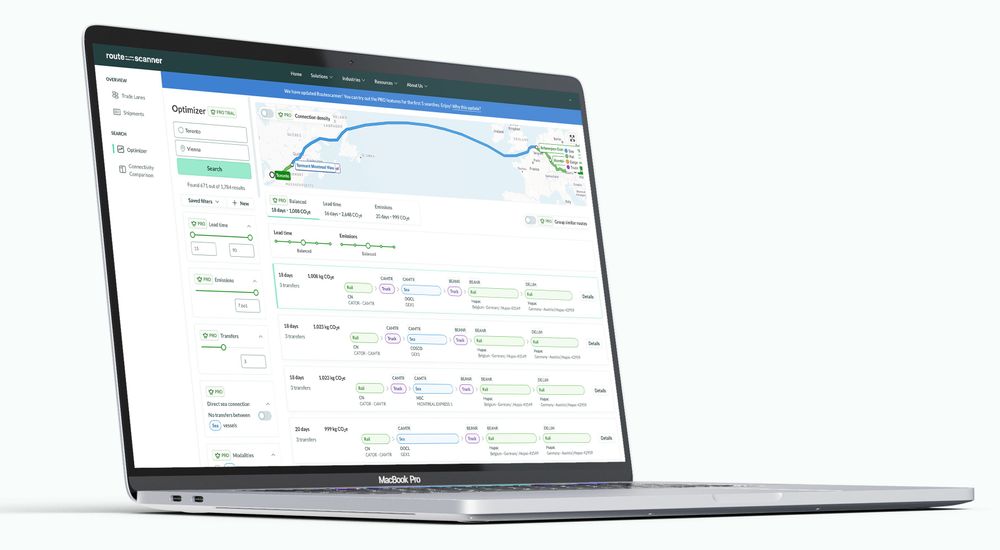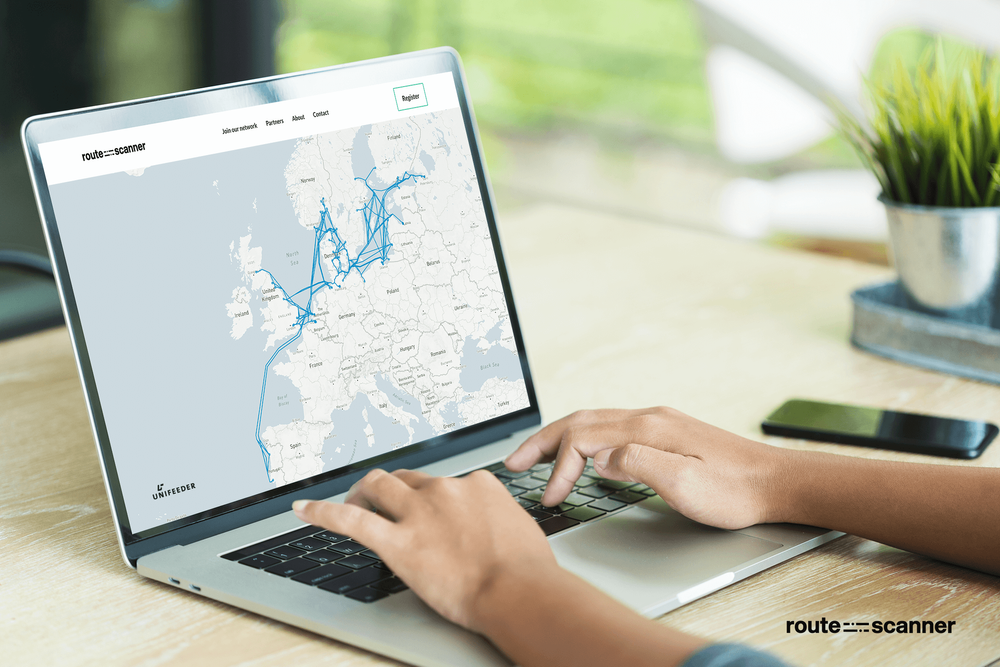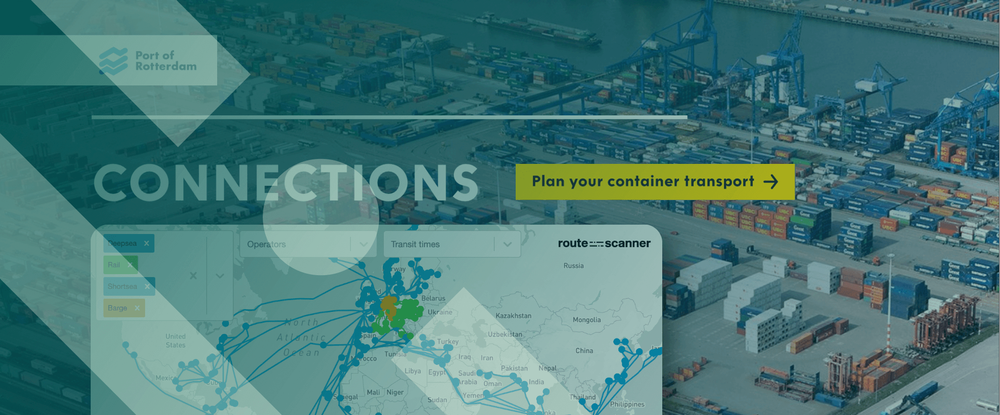
Regional expansion made easier for logistics teams
Expanding into new regions is a huge milestone for any business. Whether you’re opening a new distribution center (DC) or amplifying your business to new countries, the growth opportunities are exciting, but the logistics behind it can be complex and time-consuming.
From picking the right port to figuring out inland transport and emissions, logistics teams face a maze of decisions that can quickly get overwhelming.
Let’s break down how Routescanner can help you cut through the complexity and make smarter, faster, and greener decisions when entering new markets.
Navigating new logistics landscapes
Once you’ve picked your new DC location, the next big question is: How do we get our goods there efficiently and reliably? This isn’t just about finding the cheapest ocean freight rate. You need to answer questions like:
• Which port is closest and best for inbound containers?
• Which carriers serve that port, and how often?
• How reliable are those connections?
• What are the options for pre- and on-carriage?
• What’s the environmental impact of each route?
Traditionally, answering these meant hours of manual research, digging through carrier websites, port directories, and spreadsheets. Even then, you might miss out on better, greener, or more reliable options.
Real-world example: Retail expansion across Europe
Let’s look at a real example. A major retailer wanted to expand into several European countries. Their logistics team needed to ensure containers arrived at new DCs and stores with minimal disruption. Here’s how they tackled it:
1. Route expansion into new territories
They mapped out all possible transport routes—sea, rail, barge, truck—considering local infrastructure and multimodal options.
2. Benchmarking lanes
Each route was evaluated for cost, frequency, reliability, and CO₂ emissions. This helped them spot the most efficient and sustainable options.
3. Procurement integration
The insights fed directly into procurement, supporting negotiations with carriers and aligning with operational goals.
The result? They found non-obvious but highly efficient barge and rail routes that were not only faster but also much more CO₂-efficient than default options. Reducing congestion risk and improving resilience.
Sustainability as a strategic priority
Sustainability isn’t just a compliance box to tick anymore, it’s a strategic advantage. Understanding the CO₂ impact of different routes lets you make decisions that are good for both the planet and your business.
Key takeaways for logistics teams
When planning expansion into new regions, logistics teams should:
• Start with infrastructure mapping: Identify ports, terminals, and inland connections near your new DC.
• Use data to benchmark routes: Compare options by cost, reliability, and emissions. Not just price.
• Integrate logistics into procurement: Make sure transport decisions are part of supplier negotiations and long-term planning.
• Collaborate with local partners: Tap into regional expertise for customs, regulations, and last-mile delivery.
How Routescanner supports your expansion
Ready to make your expansion strategy simpler and smarter? Here’s how Routescanner helps logistics teams:
| Saves time | No more manual research. Get instant access to multimodal schedules and connectivity. |
| Improved reliability | Evaluate routes based on connectivity scores and historical performance. |
| CO₂ visibility | Compare emissions across routes to support sustainability goals. |
| Port & terminal flexibility | Explore multiple loading and discharge options based on carrier schedules. |
| Better decision-making | Benchmark routes by cost, reliability, and emissions. |
| Supports procurement | Use data to negotiate better terms and select optimal partners. |
| Scalable approach | Apply the same method across multiple new regions. |
Final thoughts
Expanding into new regions doesn’t have to be a logistical headache. With the right strategy and the right tools, your team can move faster, smarter, and more sustainably. Routescanner provides the structure and insight to scale into new regions confidently, reducing risk while improving cost-efficiency, reliability, and environmental performance.
Routescanner gives you the visibility and data you need to turn market expansion from a challenge into a competitive advantage. Ready to explore new regions? Let Routescanner be your guide.
More from the blog

Shaping the future of logistics with route optimization

Great realtime insight into Unifeeder’s extensive coverage in Europe

Port of Rotterdam now promotes its global network of intermodal transport connections via the Direct Connections solution
Stay in the loop
Discover how our network of shippers, forwarders, operators and terminals is growing.
Subscribe to our updates